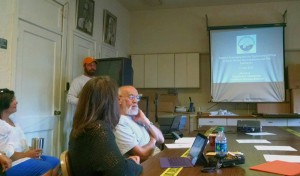Congratulations, Jake!
Congratulations to Jake Smith on his successful Master’s defense entitled “Raccoon Scavenging and the Taphonomic Effects on Early Human Decomposition and PMI Estimation.”
Jake did a careful study of how raccoons can scavenge human bodies, leading to important insights in the patterns of how and when they scavenge. Megyesi et al (2005) published a study in the Journal of Forensic Sciences to estimate PMI (postmortem interval, or time since depth), based on rating changes in a corpse’s color, insect activity and soft tissue changes. However, Megyesi’s study did not include the effect of scavenging by animals. By using donors to ARF with known dates of death, Jake has been able to show that scavenging can cause estimates of PMI to be off significantly – which could have important implications for forensic cases. In addition, because raccoons are common scavengers throughout much of the US, this is an important consideration a wide geographic region.
In Texas State, the scavengers are not raccoons, but vultures. They also do a lot of research on vultures, who play a critical role in many ecosystems. The patterns of scavenging for these two animals are quite different.
There are now six facilities in the US for studying the processes of human decomposition, and it’s clear that these are really all needed. Differences in scavengers, terrain and climate can cause dramatic differences in how people decompose, and it’s important to understand how those differences may be reflected in discovered remains.
Another thing I learned in Tennessee is how many forensic cases never make the news. For every case that makes the national news, there are many that never do. Some of these are skeletal remains for people that may have died of natural causes, or suicides. However, without highly trained forensic anthropologists, those manner of death determinations can be difficult. Although this type of research may be macabre or disturbing to many people, it is critical in solving cases and bringing criminals to justice.



Reply